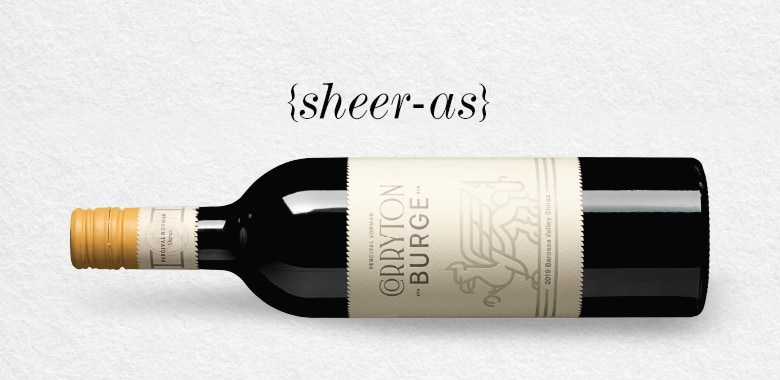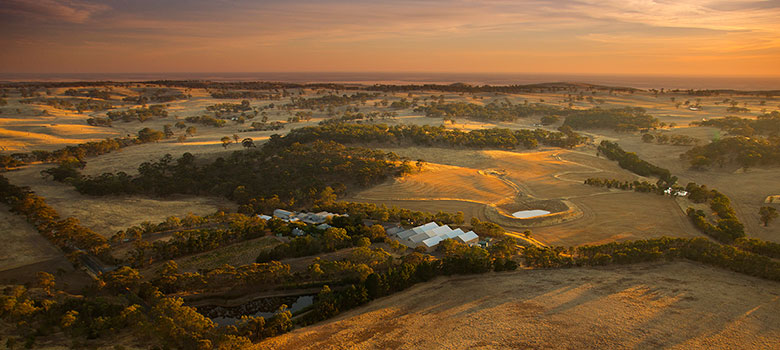
Wine
What is Shiraz?
Ah, Shiraz! Far and away the most popular red single-variety wine in the country, Shiraz is also at the heart of some of Australia’s best red wine blends. We explore its origins, its arrival here in this country, best Australian Shiraz regions like the Barossa Valley, and what foods make for a natural pairing with Shiraz in this varietal deep dive.
Shop Shiraz
AN INFOGRAPHIC GUIDE OF SHIRAZ
Shiraz is widely perceived as Australia's premier grape variety.
Shiraz is a full-bodied red with blackberry, plum, leather and earthy flavour notes.
You can pair Shiraz with a variety of food from BBQ to spicy asian.
Shiraz can be cellared for up to 15 years.
Shiraz is a full-bodied red wine with well-balanced tannins.
The most famous region for Shiraz is Hermitage in France's Rhône Valley.
Origins Of Shiraz
Shiraz is believed to have originated in France’s northern Rhône Valley, where it is known as Syrah – not to be confused with the wines hailing from the historic Persian city of Shiraz, which produced famous dry and sweet white wines named for their place of origin.
Shiraz, as it became widely known in Australia, is a dark-skinned grape variety grown around the world, from Europe to New World countries like the United States, Argentina, Chile, South Africa and New Zealand. It is one of the world’s most-planted varieties, made famous from the 18th century on as a result of the Hermitage wines produced in the hills above the town of Tain-l’Hermitage in Northern Rhône.
These wines had a reputation for their power and quality, and even attracted the admiration of Thomas Jefferson, but were mostly used as blending components for Bordeaux wines earmarked for export from France, or to improve wines in less-than-ideal vintages.
Shiraz In Australia
As with many of Australia’s classic grape varieties, Shiraz came to Australia with the James Busby collection. Busby was the forward-thinking Scottish viticulturist who happened to study viticulture in France, and decided to collect a variety of vines to plant and clone here in Australia back in 1832.
This French viticultural connection through Busby is actually why many of Australia’s oldest vines and widest produced varieties are French in origin – think Shiraz, Chardonnay, Cabernet Sauvignon and Semillon – because in addition to his French grapevine knowledge, James was awarded a grant of 809ha in the Hunter Valley, which we know today as one of Australia’s most successful and certainly historic winemaking regions.
Before Shiraz became the commonly accepted descriptor for Syrah in Australia, it was often known as Scyras, Ciras or even Hermitage. Due to its suitability to hot, dry climates, the variety flourished in many Australian regions, including its earliest plantings in Sydney and the Hunter. But it is the Shiraz plantings of the Barossa Valley that saw the variety’s Australian future set in motion. Today, the region boasts Shiraz vines that are over 160 years old, known for producing intensely flavoured, rich and earthy wines.
It is this style of Shiraz from the Barossa that has stood the tallest on the international stage, achieving widespread critical acclaim. And while big Barossans are still THE red wine of Australia, our collective tastes are also starting to seek out more cool climate styles, and with that new regions are emerging as powerful Shiraz players.
A turning point that perfectly illustrates Australia’s shifting tastes would have to be when the coveted Jimmy Watson Trophy in 2011 was awarded to Glaetzer-Dixon, Mon Père Shiraz 2010 – a cool climate Tasmanian Shiraz!
Best Australian Shiraz Regions

Shiraz is grown in every wine region in Australia and produced by 4 out 5 wineries, with differences in regional climates and soils resulting in a range of different styles. Indeed, Australia is home to the greatest diversity of Shiraz styles in the world.
While often described as hailing from cool or warm climates, the terms hot, cool, etc are only general indicators, as there is a great deal of nuance in such categorisations, spanning maritime to Mediterranean to Continental-style climates.
One thing is for certain – wherever it is grown, Australian Shiraz comfortably competes with the best in the world.
Moderate-to-warm climate Shiraz regions
-
Barossa Valley, SA
-
Hunter Valley, NSW
-
Clare Valley, SA
-
Coonawarra, SA
-
McLaren Vale, SA
-
Margaret River, WA
-
Swan Valley, WA
-
Rutherglen, VIC
-
Riverina, NSW
-
Riverland, SA
Cool climate Shiraz regions
Warm Climate Vs Cool Climate Shiraz
One of the most sensational aspects of Australian Shiraz is that, when it comes to style, there are expressions for every taste. The essential distinction between warm and cool climate Shiraz manifests in their differing textures, weight and flavour profiles.
Since Shiraz grown in warmer climates ripens more readily, the resulting wines will tend to feature fuller, riper dark fruit flavours and be more full-bodied and luscious. Such styles are considered the ‘classic’ expression of Australian Shiraz, made famous by Barossa Valley Shiraz – big-flavoured, plush and fruit-forward.
Cool climate Shiraz on the other hand ripens more gently, leading to wines that are generally more medium-bodied and savoury. Due to the grapes being exposed to less heat, their skins are thinner, reducing or softening the tannins in the wine.
While sharing a similar flavour profile to their warm climate cousins, different varietal characters emerge – white pepper instead of black pepper, and red fruits rather than black – with more subdued herbaceous characters, resulting in wines are considered more restrained and even elegant in texture.
Shiraz Blends And Sparkling Reds
Historically one of the great blending varieties, Australian Shiraz has been a key component in many great Australian red blends. It most commonly appears in the following blends:
Shiraz is also the variety most commonly used to craft the distinctly Australian style of Sparkling Reds, which offer a compelling alternative to the typical Sparkling wine for celebrating special occasions.
What Does Shiraz Taste Like?
Shiraz is generally best known for its rich, dark fruit palate of blackberry and plum with savoury notes of leather, earth, pepper and even liquorice, but like all premium wine varieties it is exceptionally versatile and able express both the region it hails from as well as reflect the winemaker’s influence.
Here are some of regional insights into Australian Shiraz characters and styles from some of the variety’s most accomplished producers!
Hunter Valley
Hilltops
Goulburn Valley
Eden and Barossa Valley
McLaren Vale
Clare Valley
Yarra Valley
Heathcote
Great Southern
Best Food Pairings For Shiraz
A Shiraz in the style of the Barossa or Hunter Valley are probably what most people think of when trying to think of a suitable food match. In such cases the rule of thumb is generally a wine with big flavours will match very well with a dish of similar strength.
This usually leads Shiraz drinkers to partner their beloved drop with beef and kangaroo, rich, spiced foods and charred barbeque flavours. And that would be the absolute right thing to do for a big Barossan-style Shiraz.
But as mentioned above, many new styles of Shiraz are emerging in Australia with cool climate styles challenging the usual go-to food matches for Shiraz. The nuanced elegance of a cool climate Shiraz has been known to partner well with the likes of a lamb stew, a chickpea and snow pea curry, or a Singapore style chilli crab, vastly broadening the culinary creations Shiraz drinkers can enjoy.
Check out some of our favourite recipes to pair with Shiraz!
Looking for more great food and wine pairings? Check out our cheese and wine matching guide! Or dive in and learn more about Australia’s other great red wine varieties with our Grenache, Cabernet Sauvignon and Pinot Noir guides.